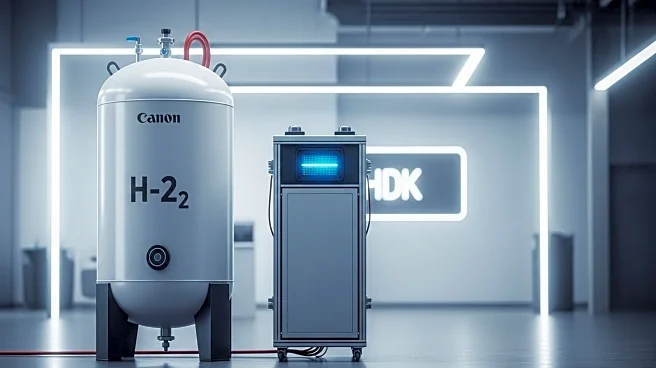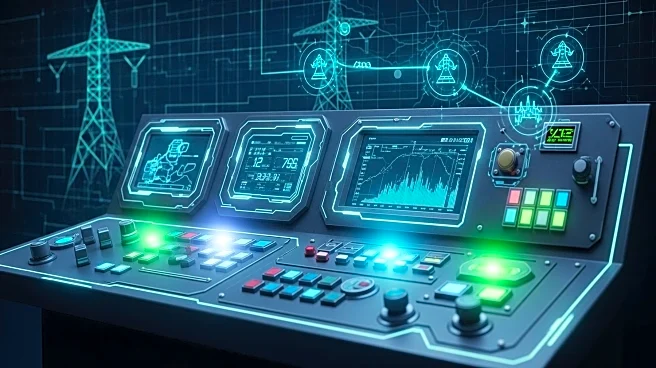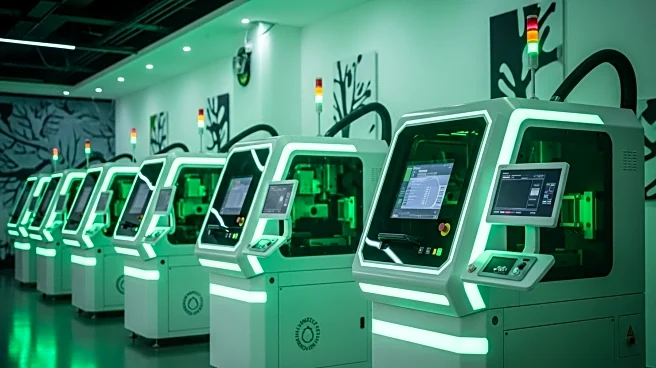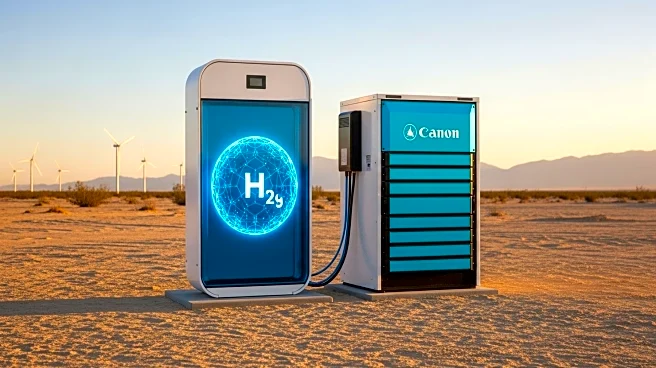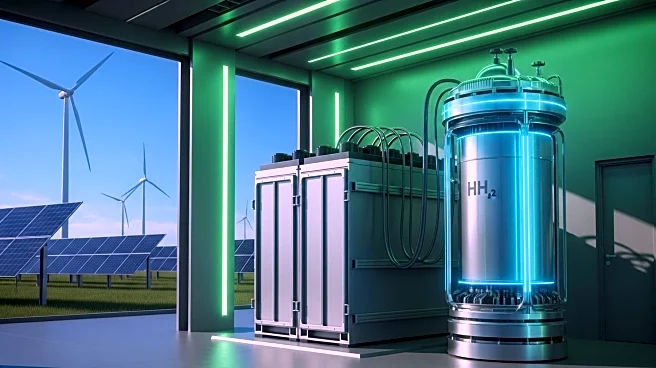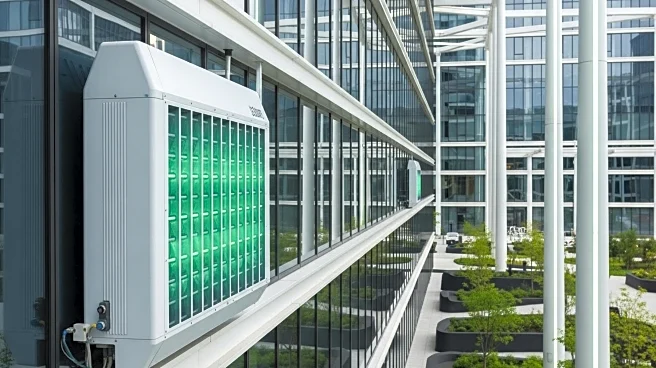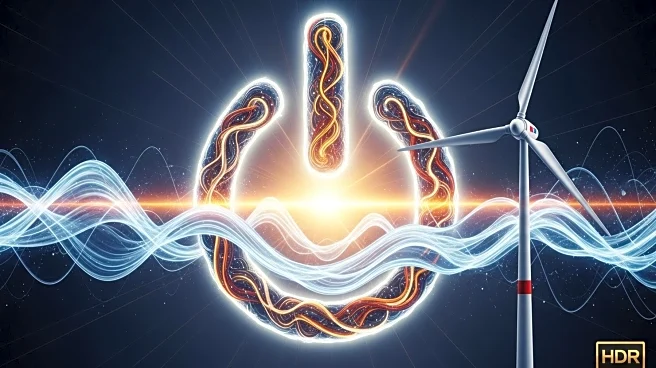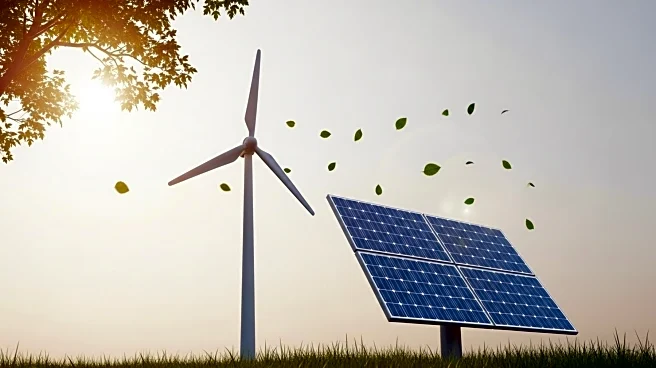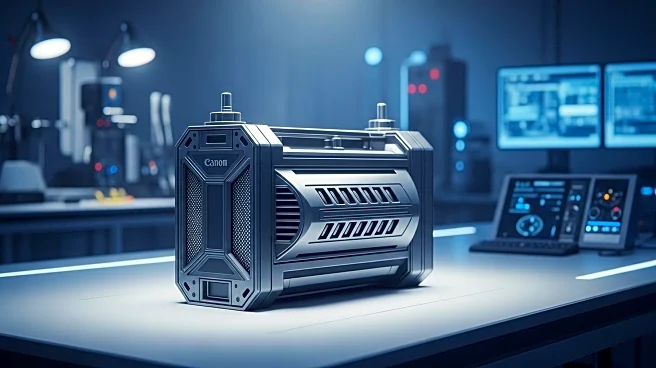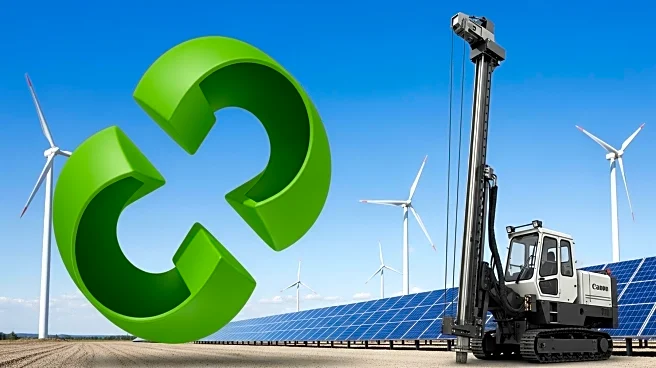What is the story about?
What's Happening?
Pacific Gas and Electric Company (PG&E) and Energy Vault have announced the launch of a pioneering hydrogen- and battery-powered microgrid in Calistoga, California. This innovative system, described as the first of its kind, replaces a diesel generator previously used for backup power during public safety power shutoffs. The microgrid, located in a remote area, utilizes hydrogen fuel cells to charge lithium-ion batteries, providing backup power to the town of 1,600 residents. The system is designed to operate on a site too small for wind or solar power generation. Tests have shown that the microgrid can supply power for at least 48 hours. The project was developed in response to PG&E's request for a solution that could eliminate the diesel generator while maintaining the same footprint and cost efficiency.
Why It's Important?
The introduction of this microgrid marks a significant step towards cleaner energy solutions, particularly in areas where traditional renewable energy sources like wind and solar are not feasible. By replacing diesel generators with hydrogen fuel cells, the project reduces emissions and noise pollution, addressing environmental and community concerns. This development is particularly relevant for large-load customers, such as data centers, seeking reliable and sustainable power alternatives. The project also highlights the growing interest in hydrogen fuel cells as a viable energy source, driven by increased demand for natural gas and supportive tax credits from recent legislation. The success of this microgrid could pave the way for similar projects in urban and remote areas, promoting the adoption of cleaner energy technologies.
What's Next?
While PG&E does not plan to replace all its diesel generators with fuel cells, the Calistoga project provides valuable insights into integrating such systems into the grid. The project could inspire further exploration of fuel cell technology in other locations, especially where space constraints and environmental concerns limit traditional power solutions. Additionally, the preserved tax credits for hydrogen storage and fuel cells under recent legislation may encourage more investments in this technology. As demand for sustainable energy solutions grows, stakeholders will likely monitor the performance and scalability of this microgrid model, potentially leading to broader adoption across various sectors.
Beyond the Headlines
The Calistoga microgrid project underscores a broader shift towards sustainable energy solutions that balance environmental impact with practical implementation. The use of hydrogen fuel cells, which can also operate on natural gas without on-site emissions, offers a flexible and cleaner alternative to fossil fuels. This development aligns with global efforts to reduce carbon footprints and transition to renewable energy sources. The project's success could influence policy decisions and encourage further research and development in hydrogen technology, contributing to long-term energy sustainability goals.
AI Generated Content
Do you find this article useful?
